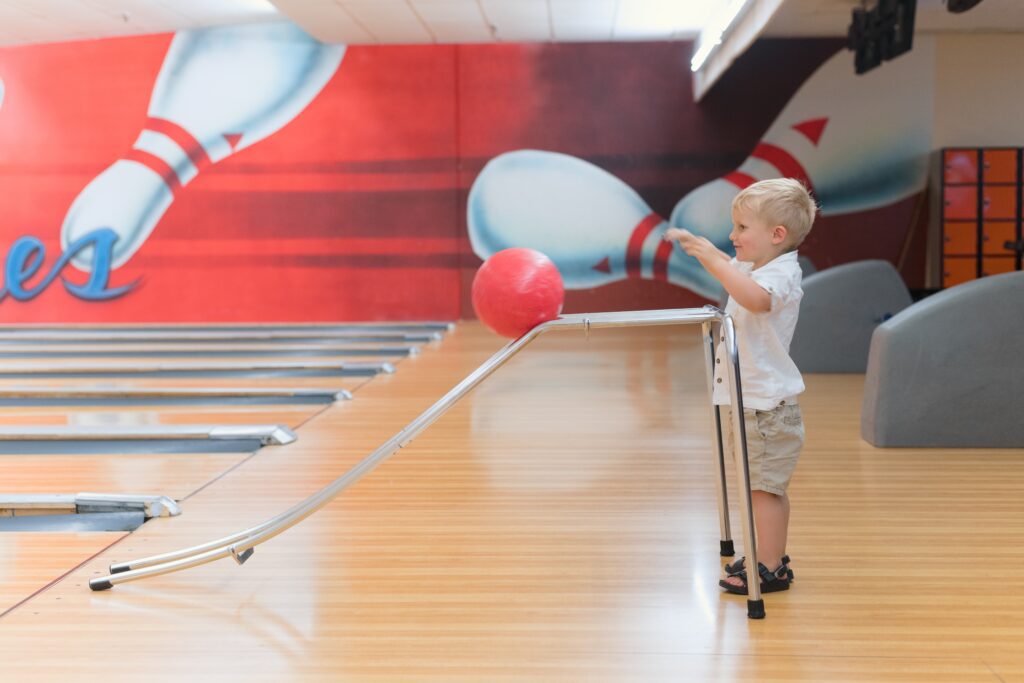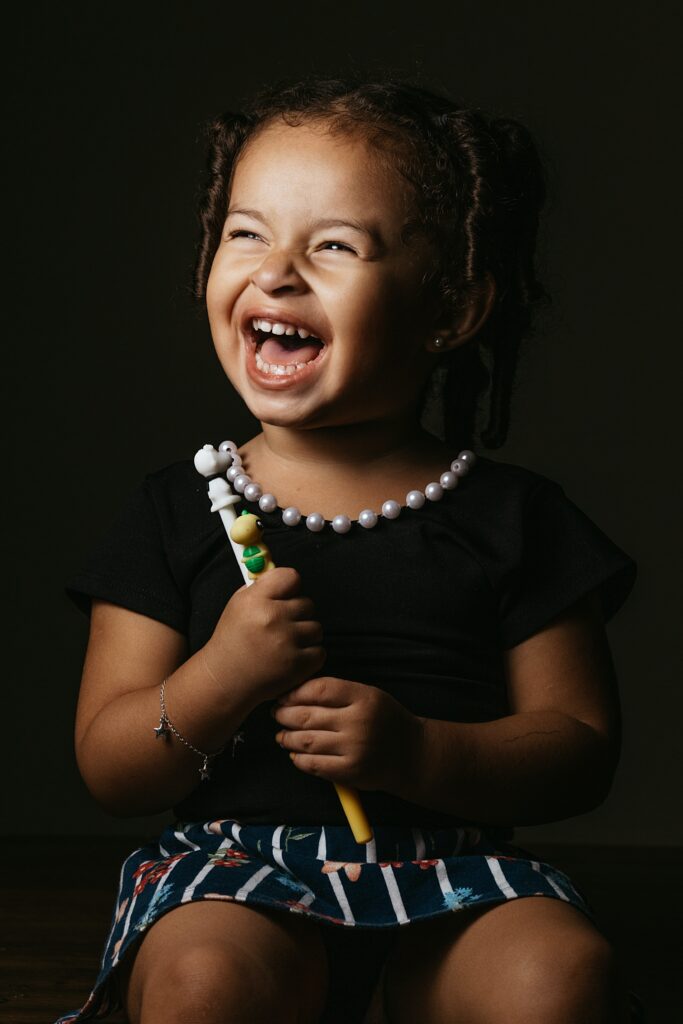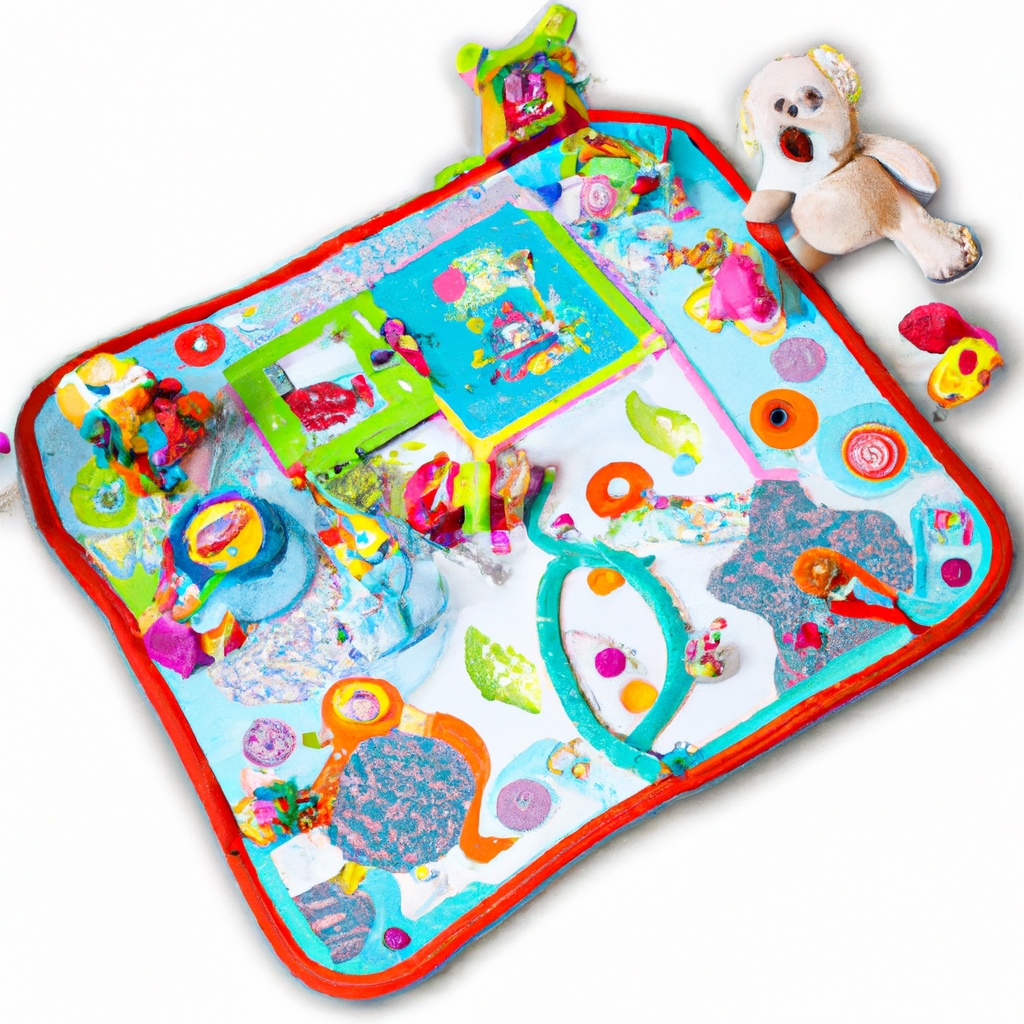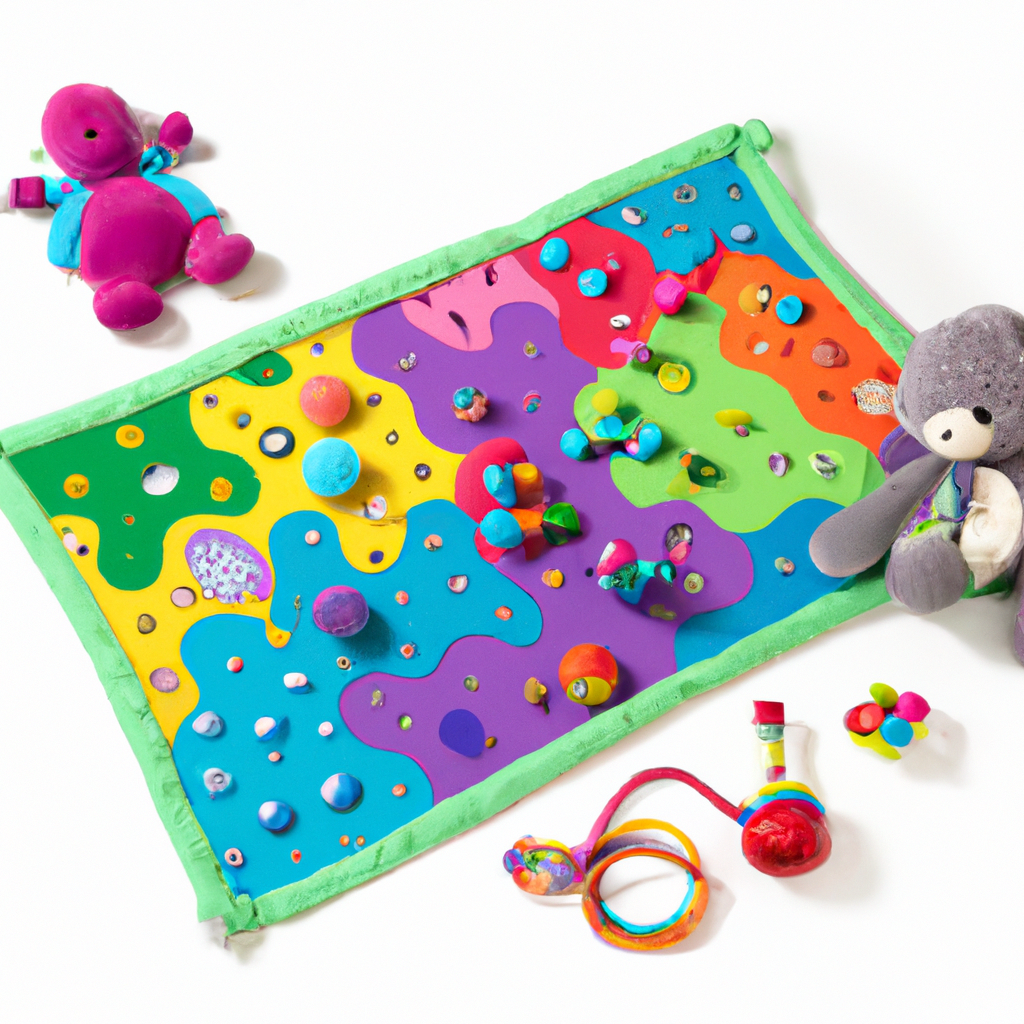

As a parent, ensuring a safe and stimulating environment for your baby is of utmost importance. By creating a space that is both secure and engaging, you can enhance their development and provide a foundation for their future learning.
From baby-proofing the house to incorporating age-appropriate toys and activities, there are various ways to foster an environment that promotes their growth and exploration. In this article, we will explore essential tips and strategies that will help you create a safe and stimulating environment for your little one.
Setting Up a Safe Space
When it comes to setting up a safe space for your baby, there are several important considerations to keep in mind. Choosing the right crib is crucial, as it will be where your baby spends a significant amount of time.
Look for a crib that meets safety standards, with slats that are close enough together to prevent your baby’s head from getting stuck. It’s also important to ensure that the mattress fits snugly in the crib and cannot be displaced.
Ensuring a safe sleep environment is another vital aspect of setting up a safe space for your baby. Keep the crib free from blankets, pillows, and stuffed animals, as these can pose suffocation hazards.
Instead, opt for a fitted sheet and consider using a sleep sack or wearable blanket for warmth. It’s also recommended to place the crib in your bedroom for the first six months to reduce the risk of Sudden Infant Death Syndrome (SIDS).
Childproofing the room is an essential step in creating a safe space for your baby. Start by securing electrical outlets and cords to prevent your curious little one from getting electrocuted or tangled.
Use outlet covers or safety plugs, and keep cords out of reach or hidden behind furniture. Additionally, consider covering sharp edges and corners on furniture with foam padding or corner protectors to prevent injuries from falls.
Creating a comfortable temperature in the room is crucial for your baby’s well-being. Keep the room at a temperature between 68 to 72 degrees Fahrenheit (20 to 22 degrees Celsius) to ensure your baby is neither too hot nor too cold.
Dress your baby in appropriate clothing for the temperature and consider using a sleep sack or swaddle to help regulate their body temperature during sleep.
Lastly, keeping the room well-ventilated is important for maintaining a healthy environment for your baby. Ensure there is proper airflow in the room by opening windows or using a fan, but be mindful of drafts.
Good ventilation helps reduce the risk of respiratory and other health issues. Regularly clean and dust the room to minimize allergens, and consider using a humidifier in dry climates to add moisture to the air.
Creating a Safe Home


This image is property of images.unsplash.com.
Apart from setting up a safe sleep environment, creating a safe home for your baby involves taking additional precautions throughout the house. Childproofing hazardous areas is essential to prevent accidents and injuries.
Install safety gates or door locks to block off areas such as stairs and rooms that may pose a danger to your baby. Keep cleaning supplies, medications, and other toxic substances out of reach or locked away to avoid accidental ingestion.
Securing heavy furniture and appliances is crucial to prevent tip-overs, which can lead to serious injuries or even fatalities. Use brackets or anchors to secure furniture, such as bookshelves or dressers, to the wall. Anchor appliances like televisions or microwave ovens to prevent them from tipping over if your baby tries to climb on them.
Keeping small objects out of reach is essential to prevent choking hazards. Babies are naturally curious and tend to put everything in their mouths.
Regularly scan your home for small objects that can be easily swallowed, such as coins, buttons, or small toy parts. Keep these items out of your baby’s reach or store them in containers with secure lids.
Locking cabinets and drawers is necessary to prevent your baby from accessing hazardous items, such as cleaning supplies, sharp objects, or choking hazards.
Install childproof latches or locks on cabinets and drawers in the kitchen, bathroom, and any other areas where dangerous items are stored. Make sure to keep all medications and vitamins locked away, as even a small amount can be harmful to a baby.
Covering sharp edges and corners is an important safety precaution to prevent injuries from falls or accidental bumps. Use foam padding or corner protectors on furniture, countertops, and any other surfaces with sharp edges or corners that your baby may come into contact with. This simple step can significantly reduce the risk of cuts or bruises.
Using safety gates to block off stairs is crucial for your baby’s safety. Install safety gates at the top and bottom of stairs to prevent falls. Choose gates that are sturdy and designed for baby safety, and make sure they are securely installed. Remember to always keep the gates closed when your baby is in the area to ensure they remain confined to safe spaces.
Providing Proper Supervision
Being present and attentive is essential for ensuring your baby’s safety. Babies require constant supervision, especially during their early months and as they begin to explore their surroundings. Stay within sight and reach of your baby at all times, and avoid leaving them alone in unsafe environments, such as on high surfaces or near open water.
Avoiding distractions is crucial when supervising your baby. Put your phone on silent and avoid engaging in activities that may divert your attention away from your baby’s needs. Keep your focus on your baby to prevent accidents and respond promptly to any signs of distress or danger.
Never leave the baby unattended, even for a short period. Babies can quickly get into dangerous situations, and accidents can happen in the blink of an eye.
Always have a plan in place to ensure someone is watching your baby if you need to step away momentarily.
Supervising during bath time is extremely important to prevent drowning or other water-related accidents. Never leave your baby unattended in the bath, even for a moment. Gather all necessary supplies before starting the bath, and keep them within arm’s reach.
Stay by your baby’s side throughout the entire bathing process and ensure they are secure and supported.
Monitoring interactions with pets is crucial to ensure the safety of both your baby and your furry friends. Always supervise your baby when they are near pets, no matter how gentle or well-behaved they may be. Teach your baby how to interact with pets safely, such as not pulling their ears or tail, and never leave them alone together, especially in the early stages of their relationship.
Keeping an eye on your baby’s exploration is important to ensure they are in a safe environment. Babies are naturally curious and will constantly be on the move as they grow. Regularly inspect your home for any potential hazards or unsafe situations, such as cords within reach, small objects left on the floor, or unlocked cabinets. Stay vigilant and adapt your baby-proofing measures as your little one becomes more mobile.
Encouraging Sensory Stimulation


This image is property of images.unsplash.com.
Providing a variety of textures is a great way to stimulate your baby’s senses. Offer different textured toys, blankets, and objects for your baby to touch and explore. Soft plush toys, crinkly fabrics, and textured balls can all help to enhance their sensory development.
Playing soothing music can have a calming effect on your baby and stimulate their sense of hearing. Choose soft and gentle tunes, lullabies, or classical music. You can play music during quiet playtime or as background noise during naps or bedtime to create a relaxing atmosphere.
Using age-appropriate toys is important to ensure your baby’s safety and engage their senses. Look for toys that are designed specifically for their age group and developmental stage. Consider toys that have contrasting colors, different textures, and make sounds to stimulate your baby’s visual, tactile, and auditory senses.
Introducing different colors to your baby can help stimulate their visual development. Incorporate a variety of colors into their environment, whether through colorful toys, mobiles, or artwork. Rotate toys and objects with different colors to provide visual variety and engage their developing sense of sight.
Engaging in tummy time is an essential activity for your baby’s physical and sensory development. Place your baby on their stomach for short periods throughout the day, starting from a few minutes and gradually increasing the duration.
Tummy time helps strengthen their neck, back, and shoulder muscles, as well as stimulates their sense of touch and proprioception.
Exploring different smells can also contribute to your baby’s sensory development. Offer them different scented objects, such as flowers, herbs, or fruits, for them to smell (under close supervision). You can also use scented baby products, like lotions or shampoos, during bath time to expose them to different smells in a safe and controlled manner.
Promoting Cognitive Development
Talking and singing to your baby is a wonderful way to promote their cognitive development. Engage in conversation with your baby, even when they are too young to understand the words. Describe the world around them, narrate your daily activities, and respond to their coos and babbles. This helps build their vocabulary, expand their understanding of language, and develop their cognitive skills.
Reading books together is another excellent way to stimulate your baby’s cognitive development. Choose age-appropriate board books or picture books and make reading a part of your daily routine. Point out and name objects in the pictures,
mimic animal sounds, and encourage your baby to interact with the book by turning pages or touching different textures.
Playing interactive games can be both fun and beneficial for your baby’s cognitive development. Peekaboo, pat-a-cake, and simple games like stacking blocks or rolling a ball can help develop your baby’s cognitive skills, such as cause and effect,
object permanence, and hand-eye coordination. Get down on your baby’s level and actively participate in the games to encourage their engagement.
Encouraging problem-solving is important for your baby’s cognitive growth. Provide age-appropriate puzzles, shape sorters, or toys with buttons or levers for them to figure out. Offer support and guidance when needed, but also give them opportunities to explore and experiment on their own.
Problem-solving activities help develop their critical thinking, problem-solving skills, and cognitive flexibility.
Introducing cause and effect is crucial for your baby’s cognitive development. Offer toys or objects that produce specific outcomes when manipulated, such as toys that light up or make sounds when pressed. This helps your baby learn about the cause and effect relationship, understand that their actions have consequences, and develop their cognitive skills.
Stimulating curiosity and imagination is important for your baby’s cognitive development. Provide open-ended toys or materials, such as blocks, stacking cups,
or play dough, that allow for creative play and exploration. Avoid overwhelming your baby with too many toys at once and encourage independent play to foster their imagination and problem-solving abilities.
Fostering Emotional Security


This image is property of images.unsplash.com.
Holding and cuddling your baby is a fundamental way to foster their emotional security. Physical touch is essential for emotional bonding and can help your baby feel safe, loved, and secure. Hold your baby close, cuddle them during feeding or while reading a book, and provide gentle touches throughout the day to promote emotional well-being.
Responding promptly to your baby’s needs is crucial for their emotional security. Babies communicate through cries, gestures, or facial expressions when they are hungry, tired, or need comforting. Be responsive and attentive to your baby’s cues, and provide comfort, nourishment, or a change of environment when needed. A supportive and nurturing response fosters trust and emotional security.
Offering gentle massages to your baby can promote their emotional well-being. Massage has been shown to have several benefits, including promoting relaxation, reducing stress, and enhancing parent-infant bonding. Use gentle strokes and soft touches during massage sessions, and be attentive to your baby’s cues and comfort level.
Establishing consistent routines can provide a sense of security and predictability for your baby. Babies thrive on routine and having a structured daily schedule can help them feel safe and secure. Set regular feeding and sleeping times, as well as consistent caregiving activities, such as bath time or playtime, to establish a predictable routine that your baby can rely on.
Creating a calm and peaceful atmosphere is important for your baby’s emotional well-being. Avoid loud noises, chaotic environments, or stressful situations as much as possible. Provide a quiet and soothing environment during sleep or rest times, and use soft, gentle voices when interacting with your baby. A calm atmosphere promotes emotional security and overall well-being.
Encouraging positive social interactions is crucial for your baby’s emotional development. Engage in face-to-face interactions, smiles, and gentle touch to connect with your baby on an emotional level. Encourage visits from trusted family members or friends who can provide positive social interactions and engage with your baby in a nurturing and loving manner.
Ensuring Nutritional Health
Breastfeeding or formula feeding is essential for your baby’s nutritional health. Breast milk is the ideal source of nutrition for infants, providing essential nutrients and antibodies. If breastfeeding is not possible, consult with your healthcare provider to choose an appropriate infant formula. Follow the recommended feeding guidelines and ensure your baby is receiving an adequate amount of breast milk or formula to support their growth and development.
Providing a balanced diet is important as your baby begins to transition to solid foods. Start by introducing single-ingredient purees, such as fruits or vegetables, and gradually incorporate a variety of food groups. Offer foods that are age-appropriate, easy to digest, and rich in essential nutrients. Consult with your pediatrician or a registered dietitian for guidance on introducing solid foods and ensuring a balanced diet.
Introducing solid foods gradually is important to monitor your baby’s tolerance and prevent any adverse reactions. Start with small amounts of pureed foods, and gradually increase the quantity and texture as your baby becomes more comfortable with eating solid foods. Introduce one new food at a time and observe any signs of allergies or digestive issues.
Promoting healthy eating habits is crucial for your baby’s long-term nutritional health. Offer a variety of nutritious foods, including fruits, vegetables, whole grains, lean proteins, and dairy products. Avoid sugary or processed foods, as they offer little nutritional value and can contribute to poor eating habits. Encourage self-feeding and allow your baby to explore different textures and tastes.
Ensuring proper hydration is essential for your baby’s overall health and well-being. Offer breast milk, formula, or water in appropriate amounts throughout the day to keep your baby hydrated. Monitor for signs of dehydration, such as dry mouth, less frequent urination, or fussiness, and consult with your healthcare provider if you have any concerns.
Seeking guidance from healthcare professionals is important for your baby’s nutritional health. Regularly consult with your pediatrician or a registered dietitian for guidance on feeding practices, introducing new foods, and monitoring your baby’s growth and development. They can provide personalized recommendations based on your baby’s specific needs and ensure they are receiving optimal nutrition.
Encouraging Physical Activity


Allowing for unrestricted movement is crucial for your baby’s physical development. Provide a safe and open space where your baby can freely move and explore, such as a play mat or an area cleared of hazards. Limit the use of containers, such as car seats or strollers, that restrict your baby’s movement for prolonged periods.
Promoting crawling and rolling helps strengthen your baby’s muscles and coordination. Encourage your baby to explore different movement patterns, such as crawling on their hands and knees or rolling from side to side. Provide a safe and cushioned environment to protect them from falls or injuries.
Providing safe toys for exploration is important for stimulating your baby’s physical development. Choose toys that are designed to encourage movement, such as activity gyms, tummy time mats, or baby walkers. Ensure that the toys are age-appropriate, free from small parts, and meet safety standards.
Engaging in interactive play is a great way to promote your baby’s physical activity. Get down on the floor and play with your baby, encouraging them to reach, grasp, and explore toys or objects. Offer toys that can be manipulated, such as rattles or stacking blocks, to encourage your baby’s fine motor skills and hand-eye coordination.
Encouraging outdoor playtime provides numerous benefits for your baby’s physical development. Take your baby outside for fresh air, natural light, and opportunities to explore different surfaces and textures. Ensure that the outdoor environment is safe and free from hazards. Supervise your baby closely and protect them from extreme temperatures or direct sunlight.
Encouraging reaching and grasping is important for your baby’s fine motor skills development. Offer toys or objects that promote reaching and grasping, such as textured balls or toys with different shapes and sizes. Encourage your baby to explore and manipulate objects using their hands, which helps strengthen their hand muscles and coordination.
Supporting Language Development
Speaking to your baby regularly is one of the simplest and most effective ways to support their language development. Engage in conversations with your baby, using simple and repetitive language. Describe what you are doing, name objects, and respond to your baby’s coos and babbles. This helps them associate words with actions and objects, and lays the foundation for language development.
Using simple and repetitive language is important for your baby’s language comprehension and acquisition. Speak clearly and slowly, using short and simple sentences. Repeat key words or phrases frequently to reinforce their meaning. This allows your baby to better understand and process language, and enables them to develop their own vocabulary and communication skills.
Encouraging imitation and babbling is a natural part of your baby’s language development. Imitate your baby’s sounds, gestures, and facial expressions to encourage their vocalization and communication. Respond to their babbling with enthusiastic and supportive interactions, making them feel heard and understood.
Singing nursery rhymes and songs is an enjoyable way to support your baby’s language development. Sing lullabies or nursery rhymes to your baby during nap or bedtime, and incorporate music into playtime. Musical experiences help your baby become familiar with rhythm, intonation, and different sounds, which can enhance their language skills.
Reading age-appropriate books together is an excellent way to promote your baby’s language development. Choose board books with bright and colorful pictures, simple stories, and repetitive language. Read aloud to your baby and use interactive elements, such as pointing to pictures or asking questions, to engage their attention and build their vocabulary.
Providing a language-rich environment is crucial for your baby’s language development. Surround them with words and engage in activities that promote language learning. Talk about everyday experiences, point out objects, and label them. Listen to music, play sound games, and introduce your baby to different sounds in their environment. Creating an environment rich in language exposure helps your baby develop their language skills and expand their communication abilities.
Seeking Professional Guidance


Consulting with pediatricians is important to ensure your baby’s overall health and development. Regularly schedule well-child check-ups, as recommended by your pediatrician, to monitor your baby’s growth, discuss any concerns, and receive important vaccinations. Your pediatrician can provide personalized guidance and address any questions or concerns you may have.
Visiting child development experts can provide valuable insights into your baby’s development and help address any concerns. Child development specialists, such as pediatric psychologists or occupational therapists, can assess your baby’s milestones, offer guidance on developmental activities, and provide strategies to support their growth and well-being.
Attending parenting classes is a great way to gain knowledge and skills in parenting. Look for classes offered in your community that focus on topics such as infant care, child development, or parenting techniques. These classes provide a supportive environment to learn and interact with other parents, and can offer helpful insights and strategies for caring for your baby.
Seeking support from experienced caregivers, such as family members or close friends who have raised children, can provide valuable guidance and reassurance. They can offer practical tips or share their own experiences, which may help you navigate the challenges and joys of parenthood. Connecting with experienced caregivers can also provide a support network that you can turn to for advice or emotional support.
Joining parent support groups can provide a sense of community and support during the parenting journey. Look for local parent groups or online communities where you can connect with other parents who are going through similar experiences. Sharing thoughts, concerns, and advice with other parents can be both comforting and helpful in navigating the ups and downs of raising a baby.
Keeping up-to-date with reliable resources is important for staying informed about best practices in parenting and child development. Seek information from trustworthy sources, such as reputable websites, parenting books, or research studies. Stay informed about important topics related to your baby’s health, safety, and development to make informed decisions and provide the best possible care.
In conclusion, creating a safe and stimulating environment for your baby involves careful consideration of their physical, emotional, cognitive, and sensory needs. By implementing the strategies outlined in this article and seeking guidance from healthcare professionals and experienced caregivers, you can provide a nurturing and supportive environment that promotes your baby’s well-being and development. Remember to enjoy the journey of parenthood and cherish the precious moments with your little one.







